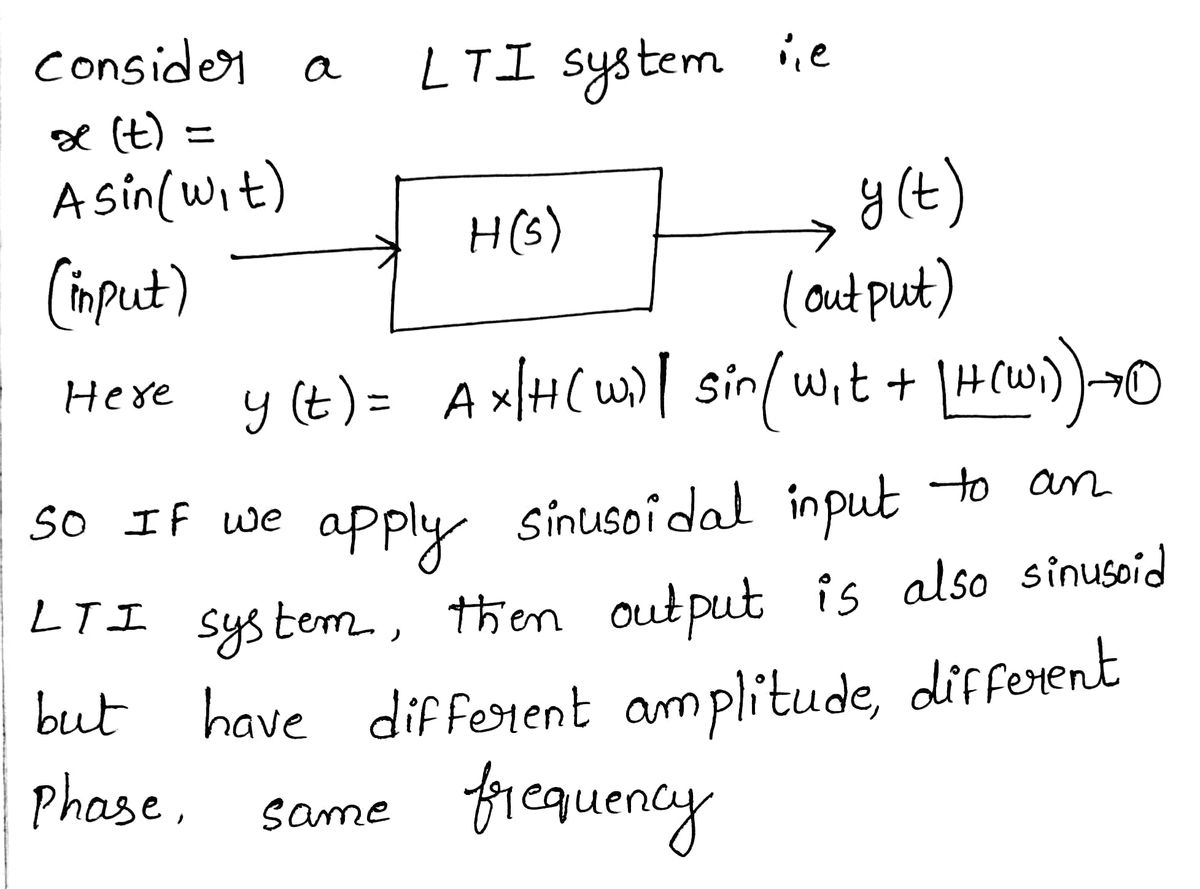D. (i) F (ii) F 5. The gain of a system is IG(jw) = 0 dB. For an input of a sinusoidal signal of frequency w₁, the output will have a magritude which is: A. Zero B. Reduced in size compared with input' C. Same size as input 6 D. Larger in size than input Decide whether each of these statements is True (T) or Falco (2)
D. (i) F (ii) F 5. The gain of a system is IG(jw) = 0 dB. For an input of a sinusoidal signal of frequency w₁, the output will have a magritude which is: A. Zero B. Reduced in size compared with input' C. Same size as input 6 D. Larger in size than input Decide whether each of these statements is True (T) or Falco (2)
Introductory Circuit Analysis (13th Edition)
13th Edition
ISBN:9780133923605
Author:Robert L. Boylestad
Publisher:Robert L. Boylestad
Chapter1: Introduction
Section: Chapter Questions
Problem 1P: Visit your local library (at school or home) and describe the extent to which it provides literature...
Related questions
Question
Number 5.

Transcribed Image Text:2. Decide whether each o
A system with a tra
i. A frequency respor
ii. A gain of 1/√(1+
A. (i) T (ii) T
B. (i) T (ii) F.
C. (i) F (ii) T
Pageview A Read aloud
ii. A magnitude of 5.
A. (i) T (ii) T
B. (i) T (ii) F
C. (i) F (ii) T
D. (i) F (ii) F
D. (i) F (ii) F
3. Decide whether each of these statements is True (T) or Faise. (F).
A system with a transfer function of 1/(1+5s) has, for a sinusoidal input of sin
i. A phase difference between the output and input of tan¹ 5w.
ii. A gain of 1/√//(1+5²).
A. (i) T (ii) T
B. (i) T (ii) F
C. (i) F (ii) T
D. (i) F (ii) F
4. Decide whether each of these statements is True (T) or False (F).
At w = 2 rad/s, a system gives an output with a gain of 5 and a phase shift of 30° for a sinusoidal input.
For a sinusoidal input of 2 sin (3t - 30°), the output has:
i. A phase of 0°.
TAdd text
se statements is True (T) or False (F).
function of 1/(1+3s) has, for a sinusoidal input of sin wt:
nction of 1/(1+j3w).
B. Reduced in size compared with input"
C. Same size as input
D. Larger in size than input
6. Decide whether each of these statements is True (T) or False (f).
A Bode plot represents:
i. The gain plotted against the frequency.
ii. The phase plotted against the frequency.
A. (i) T (ii) T
B. (i) T (ii) F
C. (i) F (ii) T
5. The gain of a system is G(jw₁) = 0 dB. For an input of a sinusoidal signal of frequency w₁, the output will
have a magritude which is:
A. Zero
B.
C. tan
D. tan
Draw
D. (i) F (ii) F
7. The phase of the system with G(s) = 1/(s+1) is:
A. tan w
tan
Highligh
Expert Solution
Step 1

Step by step
Solved in 2 steps with 2 images

Knowledge Booster
Learn more about
Need a deep-dive on the concept behind this application? Look no further. Learn more about this topic, electrical-engineering and related others by exploring similar questions and additional content below.Recommended textbooks for you

Introductory Circuit Analysis (13th Edition)
Electrical Engineering
ISBN:
9780133923605
Author:
Robert L. Boylestad
Publisher:
PEARSON

Delmar's Standard Textbook Of Electricity
Electrical Engineering
ISBN:
9781337900348
Author:
Stephen L. Herman
Publisher:
Cengage Learning

Programmable Logic Controllers
Electrical Engineering
ISBN:
9780073373843
Author:
Frank D. Petruzella
Publisher:
McGraw-Hill Education

Introductory Circuit Analysis (13th Edition)
Electrical Engineering
ISBN:
9780133923605
Author:
Robert L. Boylestad
Publisher:
PEARSON

Delmar's Standard Textbook Of Electricity
Electrical Engineering
ISBN:
9781337900348
Author:
Stephen L. Herman
Publisher:
Cengage Learning

Programmable Logic Controllers
Electrical Engineering
ISBN:
9780073373843
Author:
Frank D. Petruzella
Publisher:
McGraw-Hill Education

Fundamentals of Electric Circuits
Electrical Engineering
ISBN:
9780078028229
Author:
Charles K Alexander, Matthew Sadiku
Publisher:
McGraw-Hill Education

Electric Circuits. (11th Edition)
Electrical Engineering
ISBN:
9780134746968
Author:
James W. Nilsson, Susan Riedel
Publisher:
PEARSON

Engineering Electromagnetics
Electrical Engineering
ISBN:
9780078028151
Author:
Hayt, William H. (william Hart), Jr, BUCK, John A.
Publisher:
Mcgraw-hill Education,